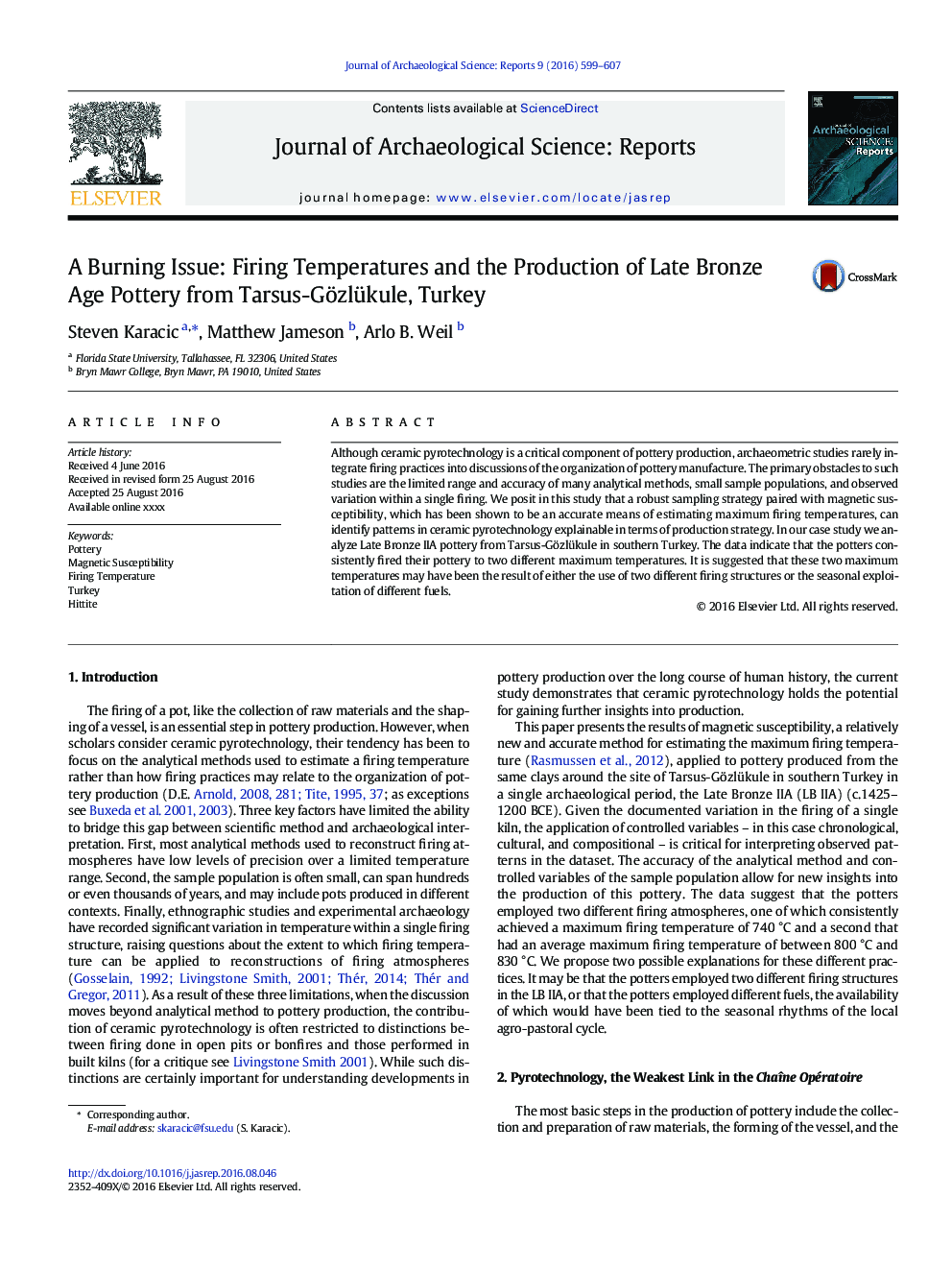| Article ID | Journal | Published Year | Pages | File Type |
|---|---|---|---|---|
| 7445695 | Journal of Archaeological Science: Reports | 2016 | 9 Pages |
Abstract
Although ceramic pyrotechnology is a critical component of pottery production, archaeometric studies rarely integrate firing practices into discussions of the organization of pottery manufacture. The primary obstacles to such studies are the limited range and accuracy of many analytical methods, small sample populations, and observed variation within a single firing. We posit in this study that a robust sampling strategy paired with magnetic susceptibility, which has been shown to be an accurate means of estimating maximum firing temperatures, can identify patterns in ceramic pyrotechnology explainable in terms of production strategy. In our case study we analyze Late Bronze IIA pottery from Tarsus-Gözlükule in southern Turkey. The data indicate that the potters consistently fired their pottery to two different maximum temperatures. It is suggested that these two maximum temperatures may have been the result of either the use of two different firing structures or the seasonal exploitation of different fuels.
Related Topics
Social Sciences and Humanities
Arts and Humanities
History
Authors
Steven Karacic, Matthew Jameson, Arlo B. Weil,
